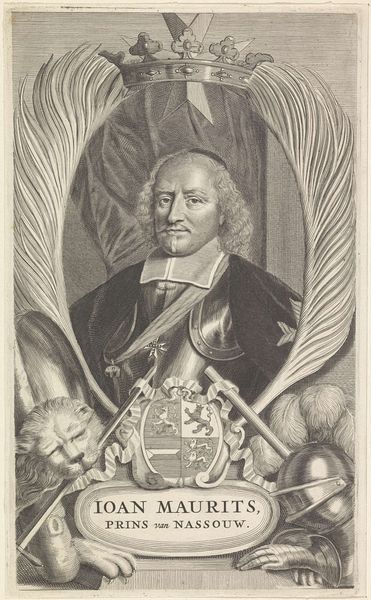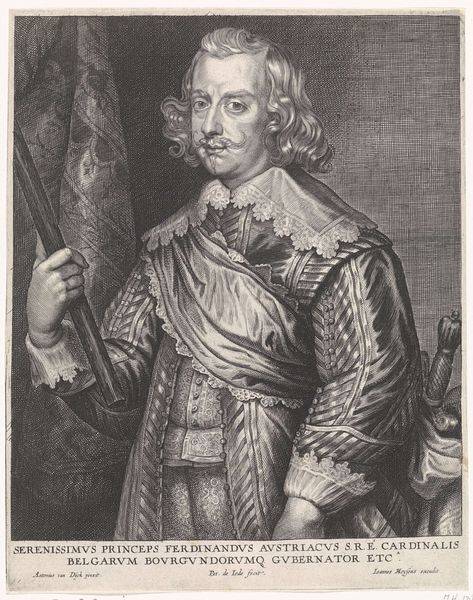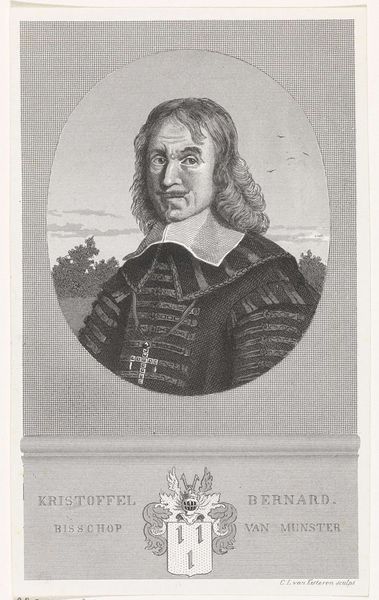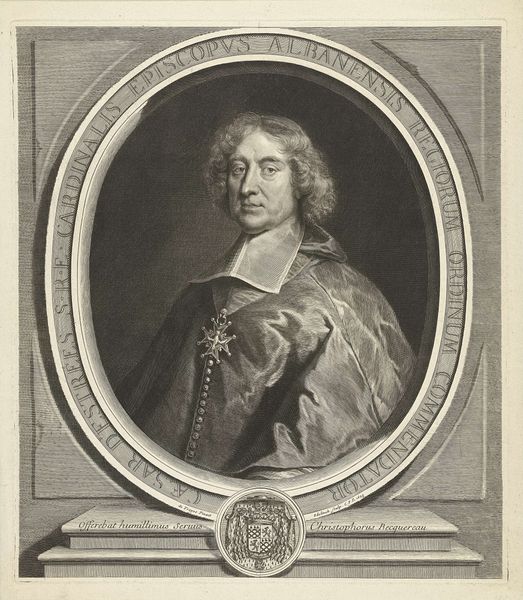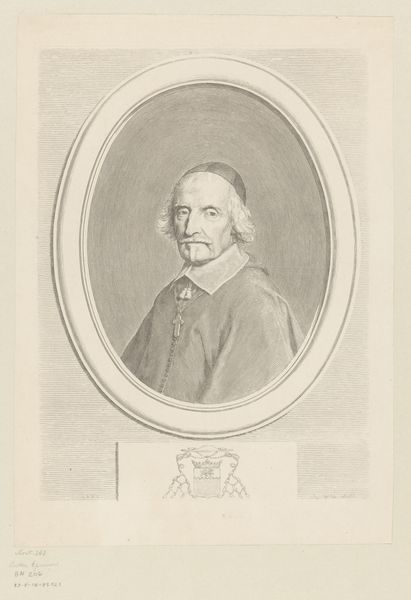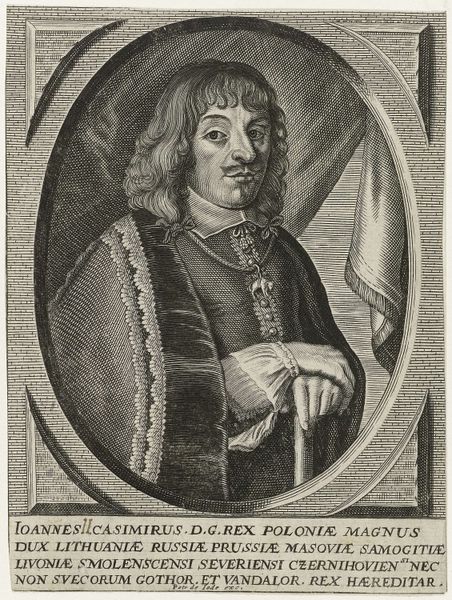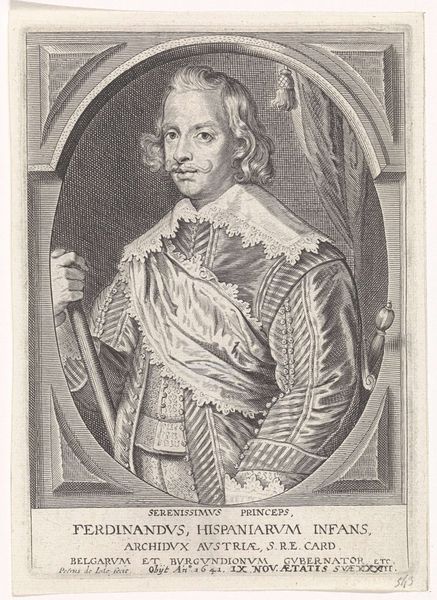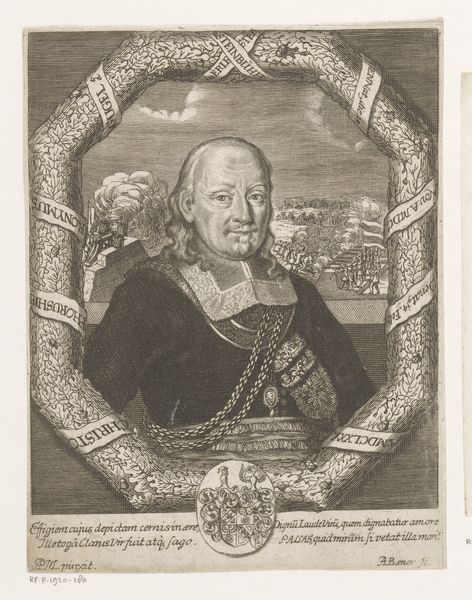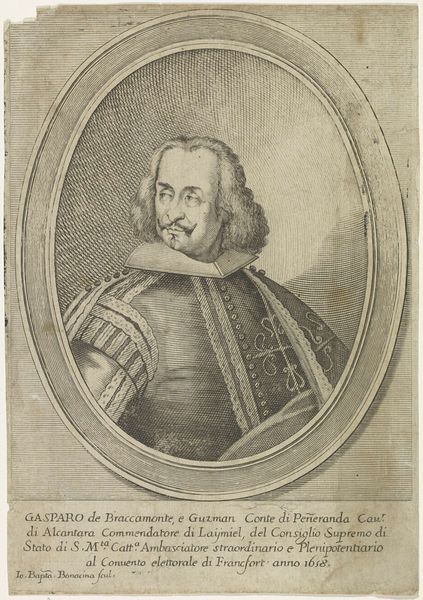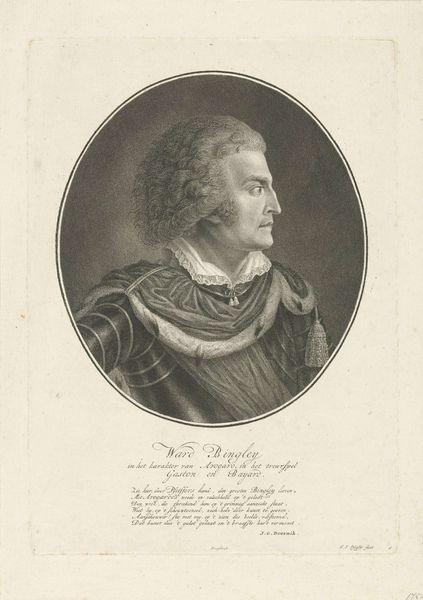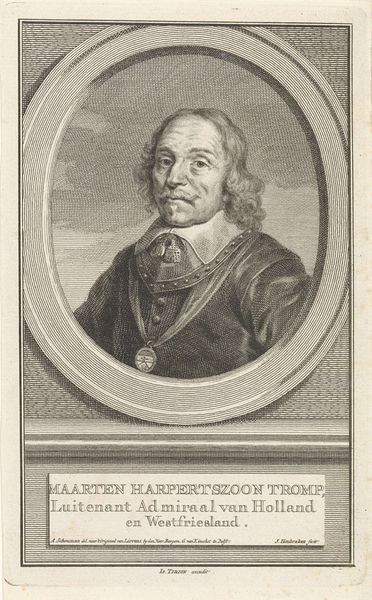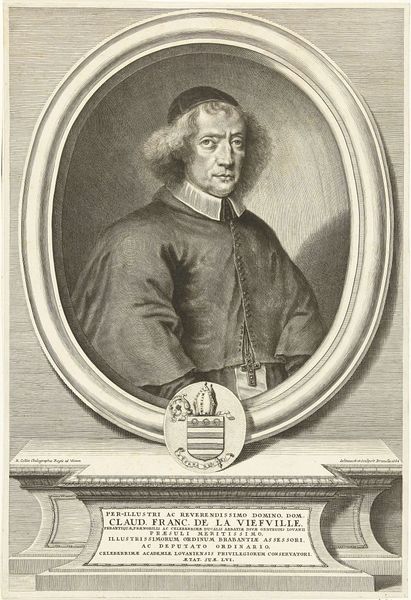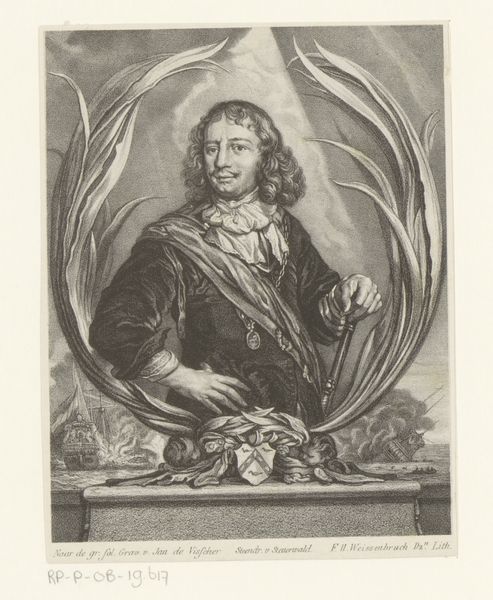
drawing, pencil
#
portrait
#
pencil drawn
#
drawing
#
baroque
#
charcoal drawing
#
pencil drawing
#
pencil
#
portrait drawing
#
history-painting
Dimensions: height 320 mm, width 275 mm
Copyright: Rijks Museum: Open Domain
Curator: Cornelis van Dalen the Younger created this drawing in 1658. It is titled "Portret van graaf Johan Maurits". Editor: Immediately, I’m struck by the palpable sense of presence he commands, all rendered with what appears to be just pencil and charcoal. Look at the sheen of the armor, that soft fabric—such control! Curator: It is a compelling portrait. Johan Maurits was, after all, a significant figure in Dutch history, the governor of Dutch Brazil and a patron of the arts and sciences. Editor: Knowing that shifts things. It highlights for me the choices of presentation: the suggestion of architecture in the background, armor, a sword… these details actively construct Maurits’s identity, linking him to a very specific projection of power. Curator: Indeed, armor and weaponry are standard symbols of leadership and military prowess, common visual cues across many eras and cultures, from ancient Greece to early modern Europe. Here, however, it seems carefully calibrated—more symbolic than functional perhaps? He holds the sword rather than wields it. Editor: And rendered so delicately! Look closely, and you can see the varying pressures of the pencil that delineate texture, implying how much Van Dalen manipulated his materials. Consider also the time involved in this detailed execution: the labor required for such a portrait speaks volumes. It transcends mere representation. Curator: Absolutely, the Maltase cross prominently displayed hints at broader ambitions and loyalties, as well as his military distinctions, contributing to a specific message the artist conveyed in his drawing. But ultimately the intent might be about creating a lasting memory of the count. Editor: Yes! As a Materialist, it drives me to ask questions of display: Where did this hang? Who consumed it? Did this drawing become an object of reverence and/or propaganda? The materials ground the narrative to the economic reality. Curator: I find the drawing, in essence, reflects how carefully crafted symbols have power—not just in their time but in ours as well, if we’re willing to interpret them. Editor: And by analyzing Van Dalen's technique alongside Maurits' role, we grasp how artists molded identities—literal material shaping a cultural understanding of power in their world, which persists today.
Comments
No comments
Be the first to comment and join the conversation on the ultimate creative platform.
